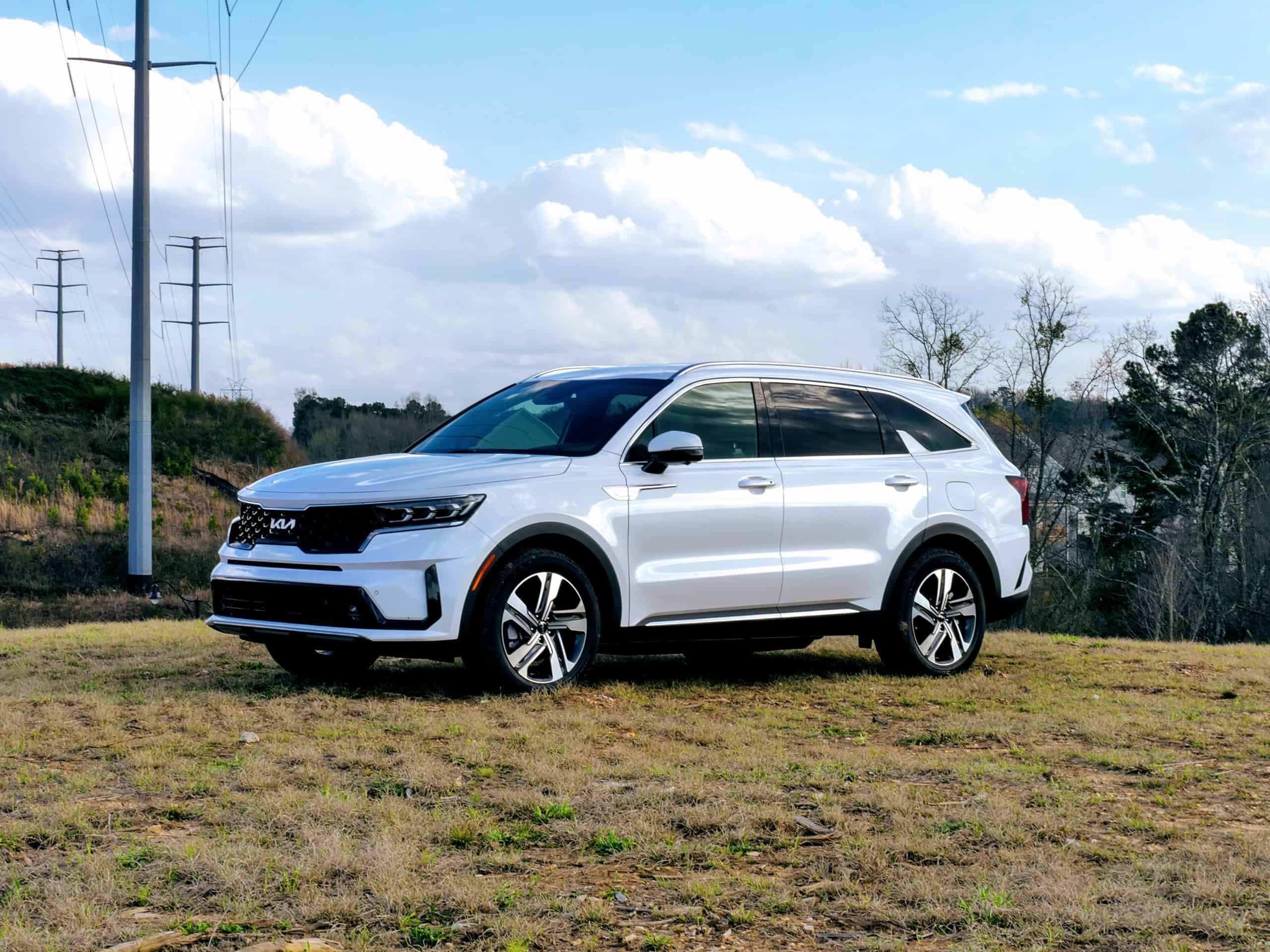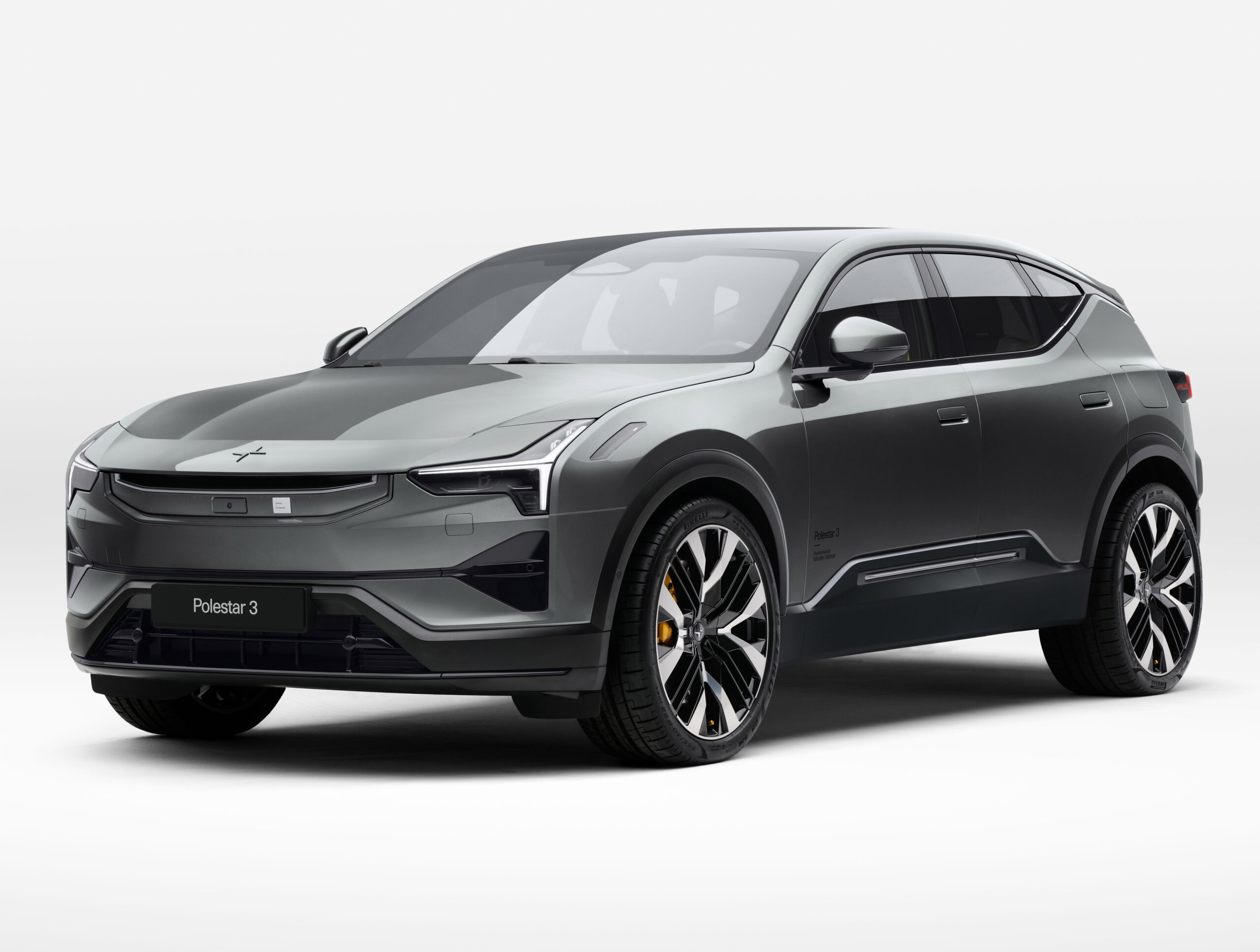

The Kia Sorento was the Korean automaker’s original three row crossover, launching in 2002 as a small body-on-frame SUV with 4-cylinder and V6 powertrains. It switched to a unibody design for its 2009 redesign and became the first Kia to be built in the United States. Between then and now, two large SUVs have graced the lineup as larger three row alternatives. First was the body-on-frame V8-powered Borrego, followed by the massive sales success that is the Telluride. Kia is struggling to keep up with demand of that model, so many have wondered if there is still any point in keeping the Sorento around. With four powertrains on offer, smarter tech, and in my opinion, a sharper design, the 2022 Sorento is quite possibly the more compelling option. Read on to find out why the new Plug-in Hybrid variant presents a valid case for my controversial stance.
The plug-in hybrid Sorento uses the same system powering the plug-in versions of the Hyundai Tucson, Santa Fe and the all-new 2023 Kia Sportage. A 1.6L turbocharged 4-cylinder making 177 horsepower and 195 lb.-ft. of torque is paired to a six speed automatic. All-wheel-drive is standard. FYI, the standard hybrid version of the Sorento is available with all-wheel-drive starting with the 2022 model year, but front-wheel-drive is still standard. In both applications, this is a true mechanical system that can be locked into engagement via a button on the front console. The 89 horsepower electric motor does not exclusively power the rear wheels like the Toyota RAV4’s hybrid systems. Total system power output is 261 horsepower & 258 lb.-ft. of torque.
According to the wheel torque page on the LCD instrument cluster (or in the main screen if you dig for it), torque never seems to reduce completely to 50/50 in AWD lock. It appears to be more like 60/40 front to rear, and was the case whether I was in all-electric mode or hybrid mode. If you drive around in Hybrid mode for the majority of the time, you should expect to see fuel economy land between 34 and 37 mpg combined like I did.
The lithium-ion battery is 13.8 kWh in gross size and can motivate the Sorento on its own for up to 32 miles thanks to the 89 horsepower electric motor. Once the charge dips below 20%, it will no longer allow you to stay in electric-only mode. This proved to be slightly confusing because you would assume Kia would want you to get the most range out of the battery before engaging the engine. Once forced into hybrid mode, there is no quick way to tell how the rest of that twenty percent is being consumed. You’ll have to dig up the info in one of the PHEV pages on the main 10.25″ infotainment screen.
The Sorento’s battery is capable of being fully charged at a Level 2 charger (240V) in 3 hours and 25 minutes. One of my local Kroger grocery stores allowed three hours of free charging at its two (yes, only two) SemaConnect stations. Though I never had the opportunity to leave it plugged in for more than two hours at a time, the Sorento’s 3.3 kW onboard charger was able to consume 6.49 kWh of charge in two hours. That equated to a gain of just under 20 miles of EV range, all for free. If I had utilized the station’s full three hours ($5/hr afterwards) of free charging, I would have been able to add just under 30 miles of range back.

As with the ownership of any electrified vehicle these days, your experience may vary. Sorento PHEV owners have been reporting 11 hour charge times on average when using Level 1 household outlets. For commuters who travel less than 32 miles one way to a job that has charging options, you could strategically never use any gas on your weekly commute. For parents who do a plethora of daily driving around town to deal with kids, shopping, food, etc., the Sorento might be forced to act like a pure hybrid more often than not. Either way, you have options that most other three-row crossovers can’t give you. In fact, the only other three-row plug-in hybrid in this price category is the Chrysler Pacifica Hybrid. It won’t give you all-wheel-drive, however, so keep that in mind.
The main difference between a Sorento Plug-in Hybrid and its Hybrid counterpart is its interior. Before I cover that, let me just address the fact that I think the Sorento is a very attractive crossover. It has a bunch of unique design details and sharp lines that make it look a little more modern than its bigger brother, Telluride. The 20″ wheels are standard on both PHEV trims, but only available on the Hybrid if you select all-wheel-drive. The model I had was missing the huge panoramic moonroof, unfortunately. Unlike other companies, Kia does not bundle the moonroof into a huge package that costs $5,000 and forces you to get other features you might not need. Here, it is basically a standalone option, which I appreciate.
Inside is where the differences are more apparent. The most notable upgrade, in my opinion, is the optional Navy Blue seat trim. My tester came fitted with this great two-tone color scheme, and I think it is a breath of fresh air. In a sea of beige, black and saddle brown interior options, go with the blue. You won’t find anything else in this price range offering it. You’ll have to venture into Genesis territory if you want to shake things up like this.
The second row is only available with two captains chairs, no bench seat option. Luckily, they have arm rests, recline a healthy amount, and slide fore and aft to prioritize space. Everyone gets their own USB port, even in the tiny third row. One average-sized adult could sit sideways back there in a lounging position, but two side by side in the normal seating position will be cramped. The seat bottom is just too close to the floor, forcing your knees to join your face for the ride. As with all other Sorento models, it is nice to have it if you need it in a pinch. Nothing more.
Another feature the PHEV has that the Hybrid does not is the full LCD instrument cluster. It’s the same one you get on the gas-only SX Prestige models, albeit with more hybrid-oriented readouts. For example, unless you have the car in ‘Sport’ mode, you get a hybrid power meter where the tachometer would be. The Sorento uses a traditional 6-speed automatic and gives you paddles to shift it if you want, so there is actually a good reason to have the tach there in Sport mode.
When the car is able to drive in EV mode, it feels like a true electric car- quiet, smooth, and torquey. That electric motor may not have a lot of horsepower, but it does have 224 lb.-ft. of torque available immediately when you punch the accelerator. In the Sport driving mode, however, the gas engine will kick in if you push it too hard. Most of the time it is there to start generating a charge for the battery, but I definitely saw it send power to the wheels a couple of times under hard acceleration. Otherwise, the acceleration is somewhat of a unique feeling because of the 6-speed automatic. Most full-electric cars use single speed transmissions or no real transmissions at all, so accelerating on electricity while feeling the transmission upshift several times is unusual.
Once underway, you can definitely feel the PHEV’s extra weight (nearly 400 pounds) over the regular Hybrid. This actually explains why 0-60 times come up short in comparison. Same for braking. There’s more mass to carry around with that bigger battery, but this does help the car feel planted and solid through the twisty stuff. Being a tall crossover, there will still be some body roll and pitch if you’re hustling it. No matter what, things are always taken at a softer volume. Cabin noise is right around the same as the Hybrid’s, which is a good thing because both are impressive.
The only time you hear any of the powertrain’s noise protruding into this serenity is when the 1.6L turbo 4-cylinder is under heavy duress. You will recognize it for its kitchen blender-like quality. Luckily, when the engine is on purely to generate a charge for the battery, you can’t even tell it’s there.
My passengers throughout the week were convinced that the Sorento’s ride and overall comfort were superior to that of the $100,000 Jeep Grand Wagoneer I introduced them to a few weeks prior. For just under $49,000 as-tested, the Sorento with a plug is definitely near the top end of Kia’s price bandwidth. You can crest into the 50s with that panoramic moonroof option checked, but there’s still a lot of value here. The tech inside will impress and benefit your family. The smooth ride and unique interior will surprise your friends. The ability to save a significant amount of money each month by actually strategically charging it up is something you can’t get on the bigger Telluride. The third row is there if you need it, and all-wheel-drive is standard. Fuel economy when treated like a normal hybrid will be similar to that of the Sorento Hybrid, just maybe a tad bit worse. At the end of the day, though, this is the smartest Sorento you can buy because it is versatile. If Stinger buyers could get behind the idea of a practical Kia for $50k, so can you.



